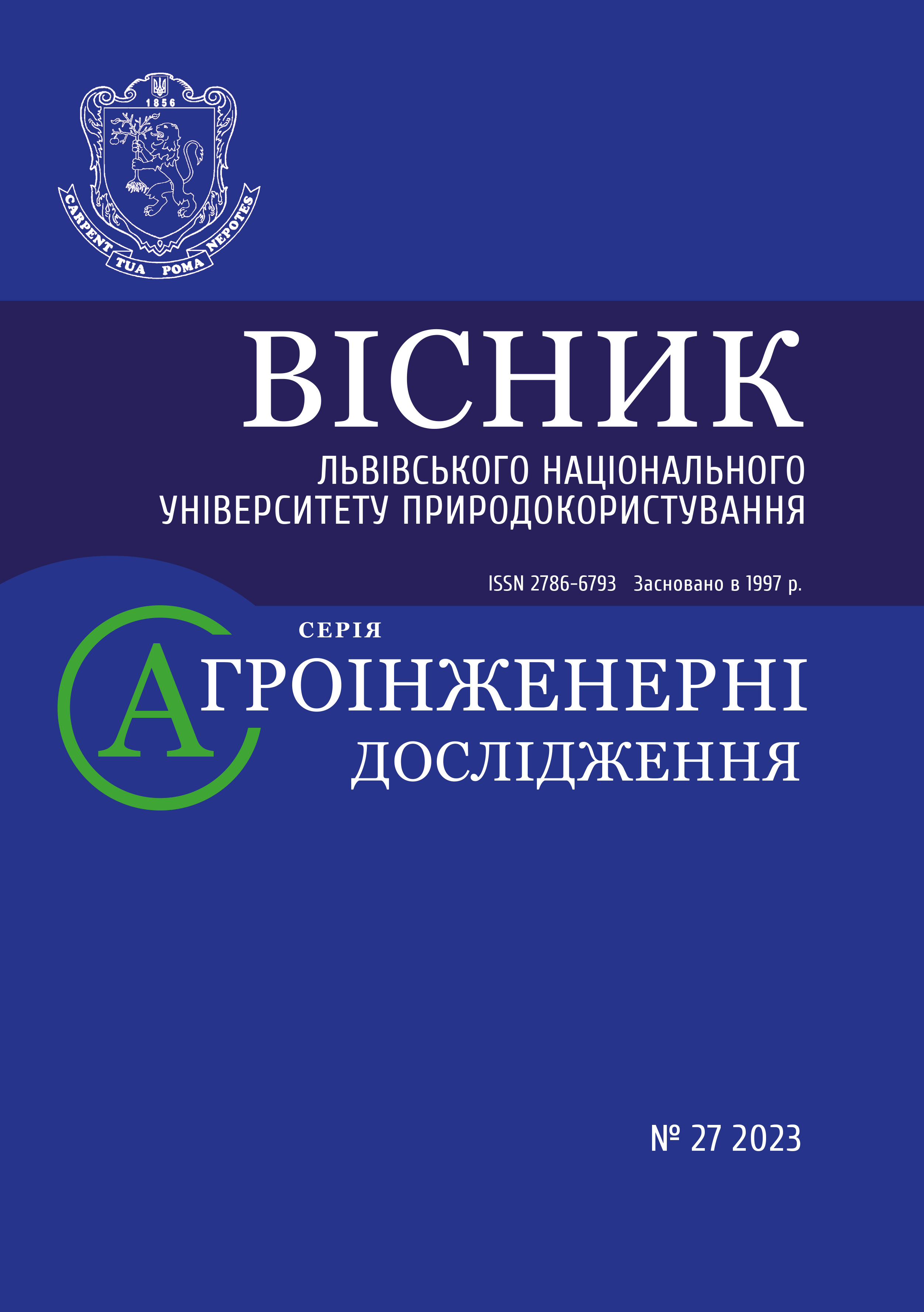Investigating voltage deviations in the enterprise’s power supply network during the electrical equipment operation
DOI:
https://doi.org/10.31734/agroengineering2023.27.061Keywords:
power supply, voltage drop, voltage, modelAbstract
The article focuses on the issue of voltage levels at consumers' buildings and the acceptable limits of voltage fluctuations. Any deviation from the nominal voltage can negatively affect the electricity supply for consumers, including lighting, electrical engines, and other electrotechnical equipment. One of the primary reasons for voltage drop is the loss of voltage in the power supply network. Research has shown that analyzing power supply networks is crucial to ensure better technical and economic performance. Nowadays, research is conducted through modeling, and the main goal is to build a structural-mathematical model of the power supply system of the enterprise using MATLAB/Simulink and analyze voltage drops in the network. The purpose of this work is to investigate voltage drops in the network using the constructed model. In this work, the authors built a structural-mathematical model of the power supply network of the enterprise. The researchers conducted a study of the 10kV line's operation on voltage drops in the line and also studied three 0.4kV cable lines alternately for voltage drops. The KL2 line had a voltage drop of more than 5%, so the cross-section was increased and the experiment was conducted again. This time, the voltage drop was less than 5%. The authors of the study also experimented with the simultaneous operation of three feeders with nominal loads. The analysis showed that, as in previous experiments, the voltage loss was within the allowable losses, and in the KL2 line, the losses exceeded the allowable ones, but changing the cable cross-section solved this problem. First, the authors analyzed the KL1 line, studying it at nominal mode from 0 to 1.2Sn. It was found that the voltage losses in this line were within the limits of permissible losses, specifically 274.5 V. Subsequently, voltage drops on the KL2 line, which were also analyzed at the nominal mode from 0 to 1.2 Sn, were observed. The voltage deviation exceeded the permissible norms, so a cable with a larger section was selected, and the voltage deviation was within the permissible limits from -5% to +5%. The researchers then tested the KL3 line and found that the voltage losses were within the allowable loss limits, particularly 5%. The line also operated at the nominal mode. In the KL4 line, the voltage losses were minimal, and the line at the nominal mode from 0 to 1.2 Sn was monitored. In the fifth experiment, the entire load was connected to the KL2 - KL4 cable lines at the same time. The analysis showed that the voltage losses in the KL3 and KL4 lines were within the permissible limits, and in the KL2 line, as mentioned earlier, the losses exceeded the permissible ones, but changing the cable cross-section solved this problem.
References
Chaban, A., & Levoniuk, V. Analysis of the non-steady electromagnetic processes in the fragment of electric system based on classic approaches to modeling. Bulletin of Lviv National Agrarian University. Agroengineering studies, 2017, 21, 167-177.
Chaban, A. V., Levoniuk, V. R., Drobot, I. M., & Herman, A. F. Mathematic modeling of transition processes in Lecher lines in idle state. Electric technology and electric machinery, 2016, 3, 30–35.
Chernykh, I. V. (2008). Modeling the electric technical units in MATLAB, SimPowerSistems and Simulink. Saint-Petersburg: Piter.
Durniak, B. V., Chumakevych, V. O., Liakh, I. M., & Yatsun, A. M. (2017). Principles of power supply for agro-industrial complex: textbook. Lviv: Ukr. akad. drukarstva.
Evdokunin, H. A. (2011). Electric systems and networks. Saint-Petersburg: Published by Saint-Petersburg. State Polytechnic University.
Halanov, V. P., & Halanov, V. V. (2001). Impact of the quality of electric energy on the level of its losses in the networks. Electric stations, 63.
Hoholiuk, O. P. (2010). Studying the energy transition in the modern computer environment. Bulletin of Lviv Polytechnic National University, 671, 24-31.
Levoniuk, V. Comparative analysis of the mathematical models of transitive electric mechanical processes in the elements of electric energy systems. Bulletin of Lviv National Agrarian University. Agroengineering studies, 2016, 20, 155-161.
Liakh, V. V., Molchanov, V. M., Sudakova, I. V., & Pavlychenko, I. V. Cable voltage line of 330 kW – a new stage of development in the electricity networks of Ukraine. Electric networks and systems, 2009, 3, 16–21.
Nesterov, R. E., Kanev, F. Yu., & Makenova, N. A. Mathematic modeling of power transmission lines and systems of grounding. Current issues of science and education, 2015, 1.1, 15-21.
Rahozin, A. A. (2001). Modeling the electric energy systems when solving problems of non-symmetric modes. Improving the efficiency of energy system operation. Moscow: Enerhoatomyzdat.
Shcherba, A. A., & Lobodzynskyi, V. Yu. (2011). Mathematic modeling of electric magnetic processes in the three-phase cable power transmission line under different transpositions of single-phase screens. Technical electrodynamics. Issue theme: Power electronic and energy efficiency, 2, 271–276.
Shcherba, A. A., Podoltsev, A. D., & Kucheriavaia, Y. N. (2013). Эlektromahnytnыe protsessы v kabelnoi lynyy s polyэtylenovoi yzoliatsyei na napriazhenye 330 kV. Tekhn. эlektrodynamika, 1, 9–15.
Shesterenko, V. Ye. (2004). Systems of electricity consumption and power supply for industrial enterprises: textbook. Vinnytsia: Nova kn.
Shydlovskyi, A. K., Shcherba, A. A., Podoltsev, A. D., Kucheriavaia, Y. N., & Zolotarev, V. M. (2008). Analysis of electric magnetic processes and equivalent parameters of segmented current-carrying conductors of power cables on 330 kW voltage. Techn. electrodynamics, 6, 7–13.
Sokolova, E. M. (2001). Electric and electromechanical equipment. Moscow: Masterstvo.
Vorotnitskii V. Е., Zahorskii Ya. T., & Apriatkin V. N. (2000). Computing, norming and reduction of electric energy losses in electricity networks. Electric stations, 154.
Zolotarev, M. V., & Oboznyi, A. L. (2006). New domestic works in the field of power cables. Bulletin of NTU KhPI, 34, 129–132.
Zolotarev, V. V., Karpushenko, V. P., Naumenko, A. A., & Buzko, S. V. (2006). Mathematic model of electric load of isolated conductors of power cables. Physical and computer technologies: Tr. 12 MNTK (ss. 239–240). Kharkov: KhNPK “FED”.


